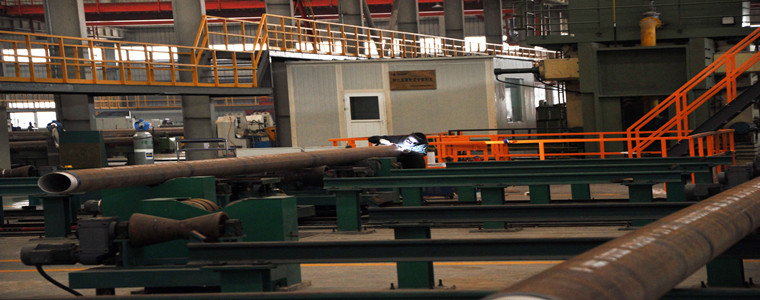General terms for steel pipes
General terms for steel pipes
Recently, we introduce the common terms used in the technical requirements of steel pipes, because there are many contents, we are divided into several sections to explain.
Today's topic: commonly used terms in the technical requirements of steel pipes-general terms for steel pipes

1. General term for steel pipe
1.1 Delivery status
The final plastic deformation or final heat treatment of the delivered product. Generally delivered without heat treatment is called hot rolled or cold drawn (rolled) state or manufacturing state; delivered after heat treatment is called heat treated state, or normalized according to the type of heat treatment
(Normalization), quenching and tempering, solid solution, annealing state. When ordering, the delivery status must be indicated in the contract.
1.2 Delivery by actual weight or by theoretical weight
Actual weight-when delivered, the weight of the product is delivered according to the weighing (weighing) weight;
Theoretical weight-When delivered, the weight of the product is calculated based on the nominal size of the steel.
1.3 Guarantee conditions
Inspection according to the provisions of the current standards and ensuring compliance with the standards are called guarantee conditions. Guarantee conditions are further divided into:
A Basic guarantee conditions (also known as required conditions). Regardless of whether the customer states in the contract. It is necessary to carry out the inspection in accordance with the standards and ensure that the inspection results meet the standards. Such as chemical composition, mechanical properties, dimensional deviation, surface quality, and technical performance tests such as flaw detection, water pressure experiments or flattening or flaring are all required conditions.
B. Guarantee conditions of the agreement: In addition to the basic guarantee conditions in the standard, there are also “according to the requirements of the demander, negotiated between the supply and demand parties and indicated in the contract” or “when the demander requires ..., it shall be specified in the contract” ; Some customers have made stricter requirements on the basic guarantee conditions in the standard (such as composition, mechanical properties, dimensional deviation, etc.) or increased inspection items (such as steel pipe ovality, uneven wall thickness, etc.). The above terms and requirements shall be negotiated between the supplier and the buyer when ordering, and a supply technology agreement shall be signed and specified in the contract. Therefore, these conditions are also called agreement guarantee conditions.
1.4 batches
The "batch" in the standard refers to an inspection unit, that is, an inspection lot. If it is grouped by delivery unit, it is called delivery batch. When the delivery lot is large, one delivery lot can include several inspection lots; when the delivery lot is small, one inspection lot can be divided into several delivery lots.
The composition of a "batch" usually has the following requirements (see relevant standards for details):
A .Each batch shall consist of steel pipes of the same grade (steel grade), the same furnace (tank) number or the same master furnace number, the same specifications and the same heat treatment system (furnace).
B. For high-quality carbon steel structural pipes and fluid pipes, they can be composed of steel pipes of the same brand, same specification and the same heat treatment system (furnace) in different furnaces (tanks).
C .Each batch of welded steel pipes shall consist of steel pipes of the same grade (steel grade) and of the same specification.
1.5 longitudinal and transverse
In the standard, the longitudinal direction refers to those that are parallel to the machining direction (that is, along the machining direction); the transverse direction refers to that that is perpendicular to the machining direction (the machining direction is that of the steel pipe).
In the impact energy experiment, the fracture of the longitudinal specimen is perpendicular to the processing direction. Therefore, it is called transverse fracture; the fracture of transverse specimen is called longitudinal fracture because it is parallel to the processing direction.

![field:title/]](/uploads/241211/1-241211152454213.png)
![field:title/]](/uploads/220425/1-22042511053I30.jpg)
![field:title/]](/uploads/220414/1-220414214051492.jpg)
![field:title/]](/uploads/211104/1-211104121004V0.jpg)
![field:title/]](/uploads/211102/1-21110215254UP.jpg)
![field:title/]](/uploads/210923/1-2109231045325B.png)
![field:title/]](/uploads/200915/1-2009151K634949.jpg)
![field:title/]](/uploads/210813/1-210Q31QA0b0.jpg)